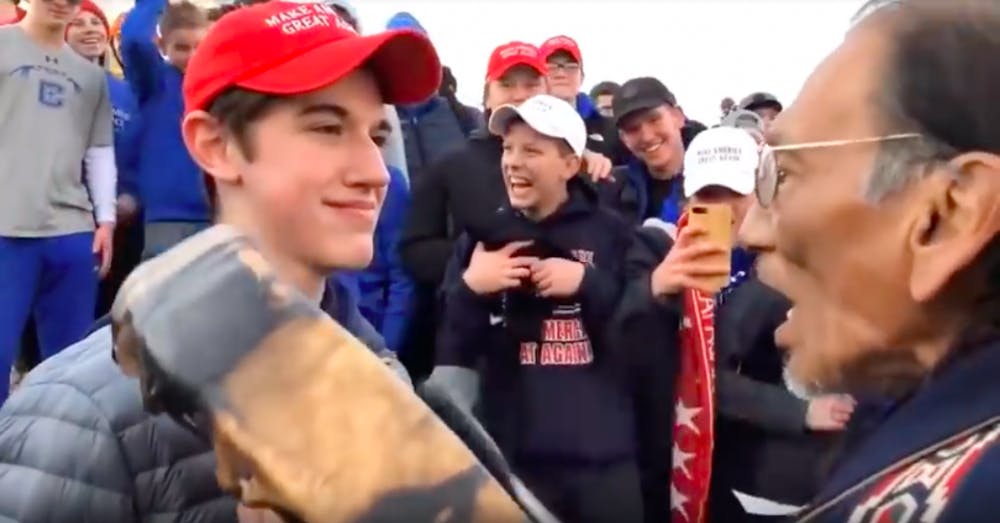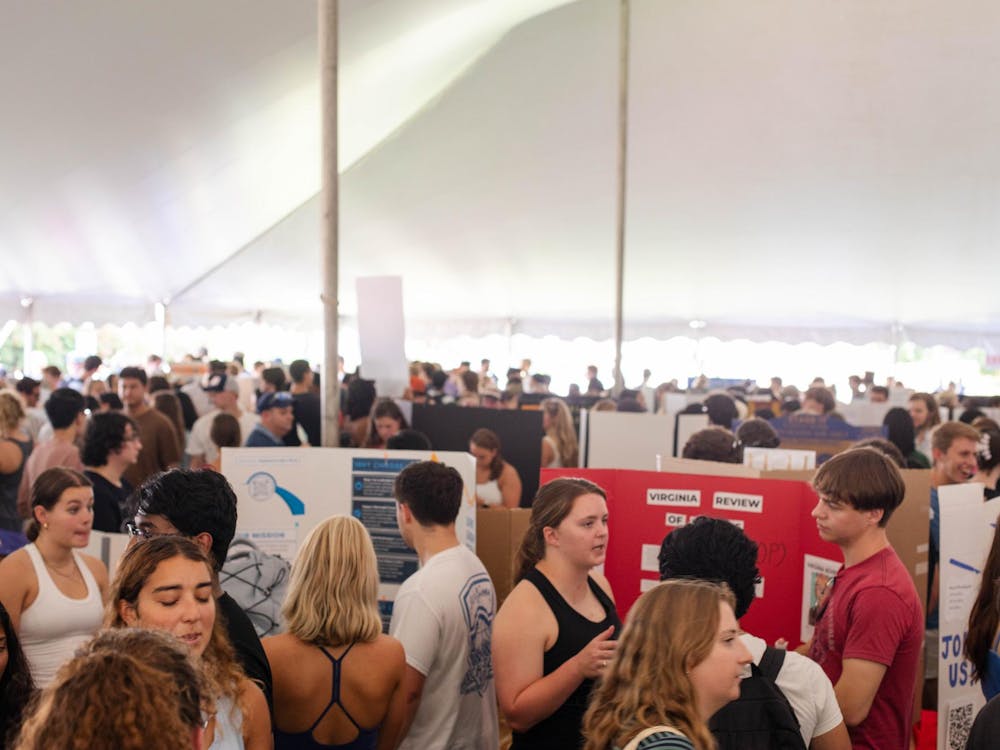Like most Twitter users, I spent the greater part of this past Saturday and Sunday in a fit of rage over a picture. The photograph — captured at last weekend’s protests in Washington D.C. — featured a smug, MAGA-hat sporting, white male teen lording over an elderly Native American activist, Nathan Phillips. Viral video clips and subsequent “tell-alls” from Phillips, released initially by the Detroit Free Press and The Washington Post, supported and fueled the storm of indignation. The general Twitter sentiment and accompanying media frenzy was correct — the Covington Catholic incident is emblematic of a larger societal ill. However, rather than symbolizing the threat of white supremacy to historically oppressed minorities, the faceoff and elicited reactions illustrate the ever-blurring lines between fact and fiction and an attempt to desperately convince the public of a larger narrative — often at the expense of accuracy and journalistic integrity.
An hour and 46 minute-long video released a day after the protests sheds transformative light on the encounter between the Covington Catholic students and surrounding groups of protesters. For the majority of the video, the children stand visibly uncomfortable as primarily adult, male members of the Black Hebrew Israelites — a widely-recognized extremist group — taunt them with homophobic and racist slurs. A member of the group calls a black student the n-word and warns that fellow classmates want to “steal his organs.” Despite their verbal abuse, the boys show restraint, albeit awkwardly.
The students grow animated before Phillips approaches. Perhaps in defiance to their initial harassment, the Covington boys form a circle and begin doing a school cheer. In the midst of this activity, Phillips, followed by other attendees of a protest for indigenous peoples, walks up to the students and begins to play his drum inches from their faces. In the few minutes that follow, the widely-shared image of Covington junior Nick Sandmann staring down Phillips is taken. According to Phillips and most initial reports, the teens “swarmed around him” as he attempted to intervene on behalf of the Hebrew Israelites, whom he described as “prey.” According to Sandmann, Phillips approached him in a show of provocation, and the high schooler’s strange expression was his way of defusing the hostile and confusing situation.
The video reveals a reality falling somewhere in between these conflicting accounts. The Covington students appear obnoxious and frankly a bit smug — Sandmann’s famous smirk is difficult to interpret as anything but. However, despite unchecked media reports immediately following the protests, the students are not the aggressors. And far from standing up for an intimidated group of activists, Phillips actively enters the altercation on behalf of the initial intimidators, the Black Hebrew Israelites. At no point is he surrounded or visibly threatened by the students. Phillip’s early statements claiming that the boys were chanting, “Build that wall, build that wall,” have also yet to be corroborated through either video evidence or eye witness accounts.
So why do opposing groups stirring up trouble at a trouble-prone event matter? The Covington Catholic incident proves the danger of identity politics and our emerging call-out culture in the broader context of modern mass media. In a society where accusation serves as the penultimate tool for destruction, the media’s reckless misrepresentation of basic facts should be more concerning. If they continue on this path, traditional and social media sources run the risk of becoming mere conduits of prejudice — constructing stories that favor the advancement of popular narratives about the national climate over the nuanced search for reality. Sandmann and his fellow students fell quick victim to national outrage due to their failure to belong to the correct ethnic, religious and political group.
Conclude what you will about the students’ guilt by virtue of their choice to don MAGA hats or their pro-life stance. Personally, I don’t think these two factors warrant the demolition of their futures or the rampant death threats that followed the incident. From a social media post calling on people to burn the school down with the kids inside, to a CNN reporter goading that someone should punch the minors in the face, to personal death threats aimed at Sandmann and his family — the lives of these students will forever be shaped by the vile reactions sparked by a media farce. The justification that the progressive ends justify the fictitious means heartlessly denies Sandmann and his classmates personhood. Even those comfortable with aiming death threats at entire families should be able to discern the moral failure of valuing symbolic truth as gleaned and interpreted by the masses over actual truth. While it’s tempting to fall into the “big picture” trap of touting the image for its representative power, actual complex racial divisions cannot be repaired through the propagation of falsehoods, hatred and scapegoating. Pinning a larger historical guilt on a group of schoolboys will not achieve whatever social justice victory the public so desperately seeks — smirk or no smirk.
Charlotte Lawson is an Opinion Columnist for The Cavalier Daily. She can be reached at opinion@cavalierdaily.com.





